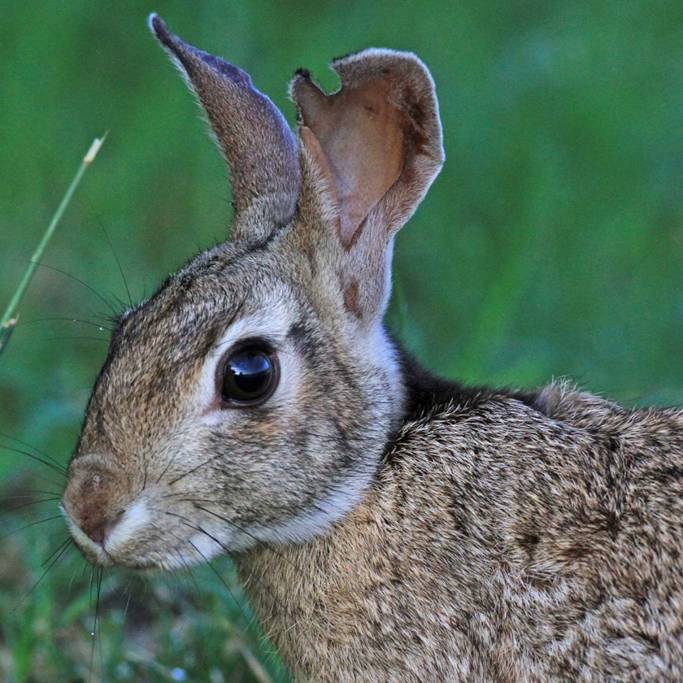For a small island, Aruba sure has a lot of unique treasures. Among these, we have some subspecies of animals that are unique to our island. These have evolved to perfectly adapt to our desert climate and make Aruba their home. At the same time, they are part of what makes Aruba truly one of a kind.
Cascabel (rattlesnake, Crotalus durissus unicolor)
According to the Arikok National Park, Aruba knows two kinds of snakes, the Santanero and the Cascabel. The cascabel belongs to the rattlesnake family. The cascabel is the only venomous snake from Aruba. It has a length of 65cm to 100cm, and is about 4 to 5cm wide. Its color varies from light brown to grey-brown, and its underbelly is white. On its back there are marks that are a little darker, in the shape of diamonds.
Its reproduction is oviparous, meaning the offspring can hatch from their eggs just before, during or immediately after laying.
The cascabel lives mainly in the Arikok National Park. It likes to live in dark places, and is thus found hidden among the limestone rocks and under stones. As a defense mechanism, the cascabel uses its rattle as a warning, and it is not an aggressive animal.
The cascabel feeds on lizards, small mammals such as rats and mice. It paralyzes or kills its prey with its venom, which is injected through a bite. The enemies of the cascabel are donkeys, goats, humans and cars. Humans are the biggest enemy of the cascabel, as they kill them and destroy their habitat for urbanization.
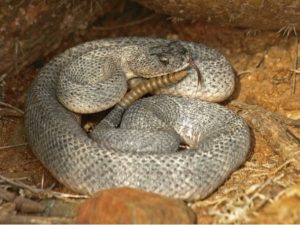
Shoco (burrowing owl, Athene cunicularia arubensis)
The shoco is a small bird which is seldom seen. They are active during the day but are more active later in the day and at night for hunting. These owls have very good night vision and very good hearing.
The shoco is the national symbol of Aruba.
The shoco has about 20cm of length, and the females are slightly heavier than the males. They are light brown in color, with many white spots. The belly of the Shoco is either white or light brown, and the shoco has striking yellow eyes. Its beak is yellow/green. Young owls do not have white spots and are lighter in color.
The nest of the shoco is a burrow in the ground. If the shoco cannot find a burrow, it will dig one in soft soil. The shoco lays one or two eggs every other day until all the eggs are laid – a shoco can lay up to four eggs. The first owlets hatch after three to four weeks. The shoco owl takes care of the owlets for three months until they leave the nest. Only a few owlets survive.
The owls dig burrows in the ground with low grass vegetation. An owl can live up to nine years.
Its defense mechanism is simply to fly away or retreat to its burrows. They eat mostly insects, mice and lizards, and the main threats to their survival are boas – an invasive species introduced by humans as pets – and humans through destruction of their habitat.
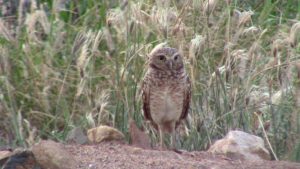
Prikichi (parakeet, Aratinga pertinax)
The Prikichi is the national bird of Aruba. On Aruba, Bonaire, and Curaçao, parakeets can be found, but each of the three islands has a different breed. The Yellow-shouldered Amazon parakeet that we have on Aruba is also found along the coast of Venezuela. Unfortunately, there is interbreeding between the breeds due to cage birds from, for example, Curaçao being released on Aruba. The parakeet population on Aruba is in danger due to extensive deforestation occurring on the island because of the growing population.
The prikichi weighs between 90 to 100 grams. It has a greenish-brown head with some yellow around the eye. The back and wings of the parakeet are dark green, and the underside of the body is a lighter shade of green. There is also a bit of blue in the wings. The parakeet’s beak is gray/black.
Parakeets often use termite nests as breeding sites. Parakeets are found in all natural environments (mondi) of the island. It defends itself by flying away and loud cries. Parakeets eat seeds from the pods of the Kwihi tree, Divi Divi, and columnar cactus. They also consume natural fruits. Its main predators are boa constrictors, humans.
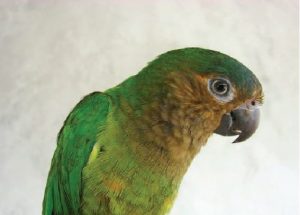
Conew (cottontail rabbit, Sylvilagus floridanus nigronuchalis)
The Eastern Cottontail rabbit (Sylvilagus floridanus) was probably brought over to the island by Indian settlers thousands of years ago as a source of food. This rabbit, locally known as Conew, has spread all over the island and has become part of our ecosystem. The very adaptable Conew can live in a wide variety of habitats, including Aruba’s xeric scrublands, where it typically grazes on weeds and grasses.
The Aruban Conew has a brownish grey color and a distinctive white belly. This white fur extends to the bottom of the tail which becomes visible as the rabbit runs. These rabbits can grow up to approximately 40 centimeters in length over their short lifespan of 3 years. Cottontail rabbits reach reproductive maturity when they are just 2 to 3 months old. A female rabbit, called a doe, finds a suitable nest spot under a shrub or rocks and lines it with fur. She can have an average of 3 to 4 litters per year averaging 5 young each. The doe only visits her young once or twice a day to nurse her babies for a period of 2 to 3 weeks. The young reach independence at 4 to 5 weeks.
The Aruban Conew is an endangered species and protected by Aruban law. The Conew is thought to have drastically declined due to an increase in human activities, habitat fragmentation and predation by the invasive Boa constrictor as well as feral cats and dogs. However, recently there seem to be more rabbit sightings in rural and wilderness areas and also in the National Park. This could be linked to a recent decline of the invasive Boa population after the long period of drought. As the Conew can reproduce very quickly, a short break in predation pressure can lead to a fast increase of rabbits. Sadly, the Boas are back on the rise again with the truly wet rainy seasons we have recently experienced. This could cause a new decline in the Conew population that was just starting to recover.
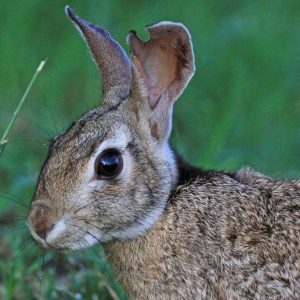
These are but a few of Aruba’s beautiful inhabitant, which we must all contribute to protect. For more information, visit https://www.arubanationalpark.org/main/flora-fauna/


